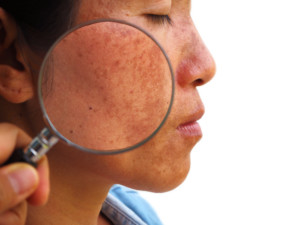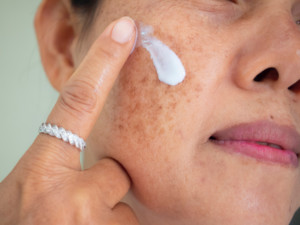By Kelsie Matthews, L.E
What is melasma?

Melasma is patchy hyperpigmentation that is triggered by hormonal changes in the body. Melasma is commonly known as the “pregnancy mask” although it doesn’t always occur from pregnancy. It is most common around the mouth and cheekbones under the eyes. It is seen a lot more in darker skin tones, but it can happen to anyone.
What causes melasma?
Melasma is typically triggered by hormonal changes in the body such as pregnancy, birth control, or menopause. Most of the time, the pigmentation fades when those factors regulate, but in some cases the pigmentation can last for years if not treated.
How do you treat melasma?
- Hydroquinone: a prescription medication that can be used topically to lighten hyperpigmentation like melasma in the skin
- Chemical peels: acid solutions such as azelaic acid or kojic acid can be applied to the skin to fade current hyperpigmentation and prevent it from coming back in the future
- Laser treatments: laser treatments like Halo (Hybrid Fractional Laser) is good for resurfacing the skin, as well as reducing hyperpigmentation
- Light-based devices: occasionally, treatments like IPL’s and BBL’s can help reduce melasma in the skin. However, these treatments are a little more tricky because there is a risk that the heat from the device can exacerbate the hyperpigmentation
- Balancing hormones: when hormones like estrogen and progesterone return to normal levels after they change, melasma can oftentimes fade on its own. Sometimes supplementing hormones in order to balance them faster is necessary, and can help the pigmentation as well

Melasma can be one of the most stubborn conditions in the skin, but with proper treatment and lots of patience it can be greatly improved.
